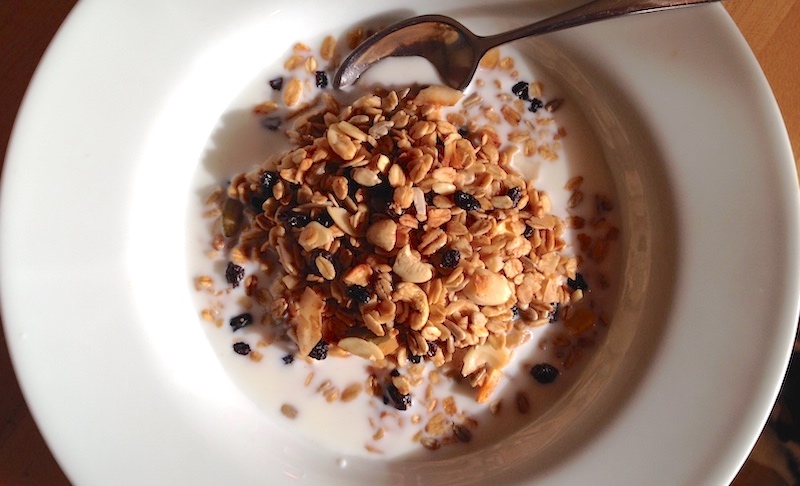
Sweet Summer Memories: Sweet Corn Risotto
I must have been around four years old. My family lived in a fifties-style ranch on a one block-long street of similar houses in Tigard, an early patch of development in what would become the suburban sprawl that quickly surrounded Portland in the 1960s and 70s.
At the back of the house, the edge of our neatly mowed, unfenced green lawn bordered on a field of wildflowers where I'd wander, picking bouquets to bring to my mother. It would eventually become a parking lot for a giant strip mall, but to my four-year-old self it was a vast prairie, a place for catching and studying the birds and bugs that lived there or spending what seemed like hours laying there and looking up at the clouds passing overhead.
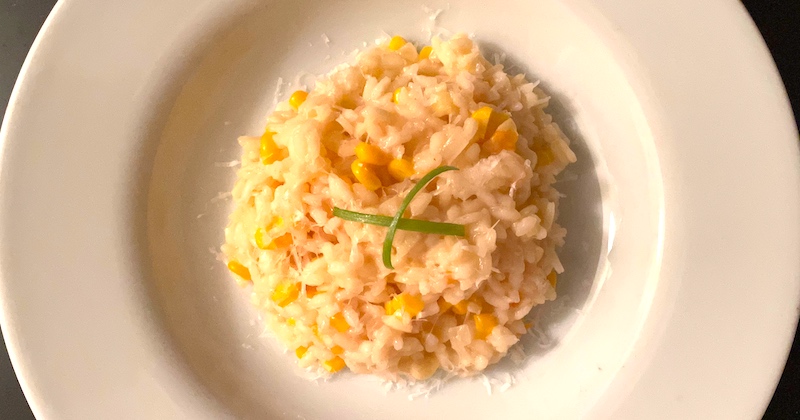 Across the street in front of our house was another row of houses identical to ours, beyond which stretched another field, this one planted with row upon row of corn. All the kids on our street would play hide-and-seek in that field, losing each other in the sameness of the shadowy stalks that stretched into the sky, their tassels glowing in the evening light. During the late summer I'd often wander off into the field on my own and pick an ear or two, peeling back the green husk and nibbling the sweet raw corn that always tasted better than anything boiled and buttered, and only emerge when I heard my mother calling from the front porch to come in for dinner.
Across the street in front of our house was another row of houses identical to ours, beyond which stretched another field, this one planted with row upon row of corn. All the kids on our street would play hide-and-seek in that field, losing each other in the sameness of the shadowy stalks that stretched into the sky, their tassels glowing in the evening light. During the late summer I'd often wander off into the field on my own and pick an ear or two, peeling back the green husk and nibbling the sweet raw corn that always tasted better than anything boiled and buttered, and only emerge when I heard my mother calling from the front porch to come in for dinner.
So when it's corn season and there's no field across the street to wander off into, I'll bring home an armload from the farmers' market, husk a few ears, scrape off the kernels and cook up a batch of corn stock from the cobs to make a corn risotto that brings back, if only for a few moments, that sweet memory from my childhood.
Sweet Corn Risotto
1 Tbsp. olive oil
1 Tbsp. butter or margarine
1/2 yellow onion, chopped fine
2 cloves garlic, minced
2 c. arborio rice
2 c. corn kernels
5 c. corn stock
1/2 c. parmesan
Salt and pepper, to taste
To make corn stock, cut kernels off of five corn cobs. Put kernels in a bowl and set aside. Place cobs in large saucepan and cover with 5 cups water. Bring to a boil, then reduce heat to simmer for 15 to 20 minutes. Remove cobs and strain stock through wire mesh sieve to remove any debris.
Melt butter and oil in 2 1/2-3 qt. heavy-bottomed sauce pan. Add onion and garlic and sauté over medium heat till translucent. Add rice and stir for about 30 seconds till grains are hot and coated with butter mixture. Add corn and combine. Stirring frequently, add stock one ladle-full at a time, allowing rice to absorb it before adding more. When rice is tender but still slightly al dente, stir in cheese. Add salt and pepper, adjusting to taste.

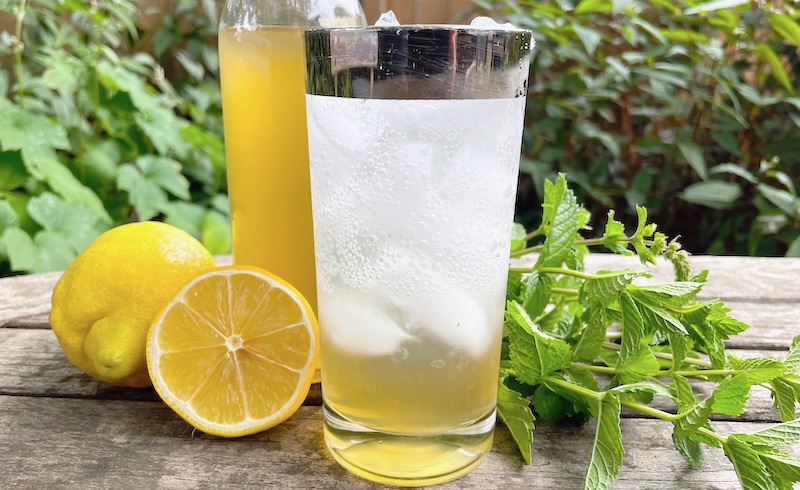
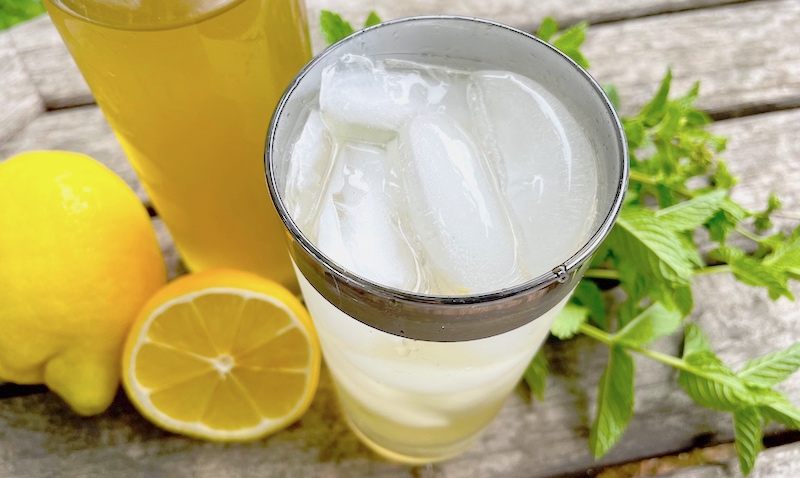 This year, just as the early July heat wave was hitting the Northwest with a vengeance, our
This year, just as the early July heat wave was hitting the Northwest with a vengeance, our 
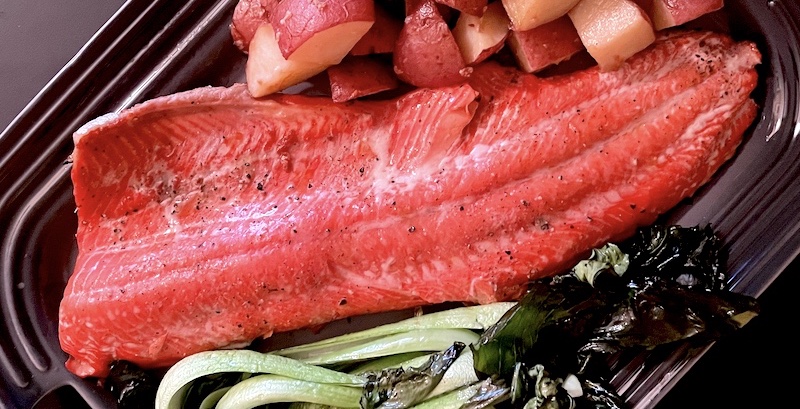
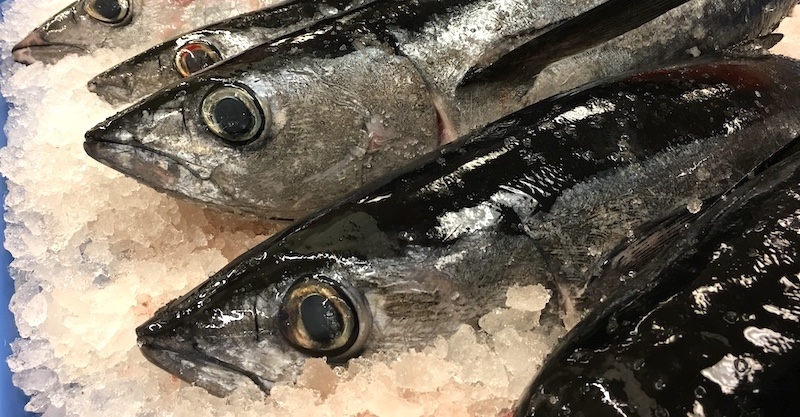
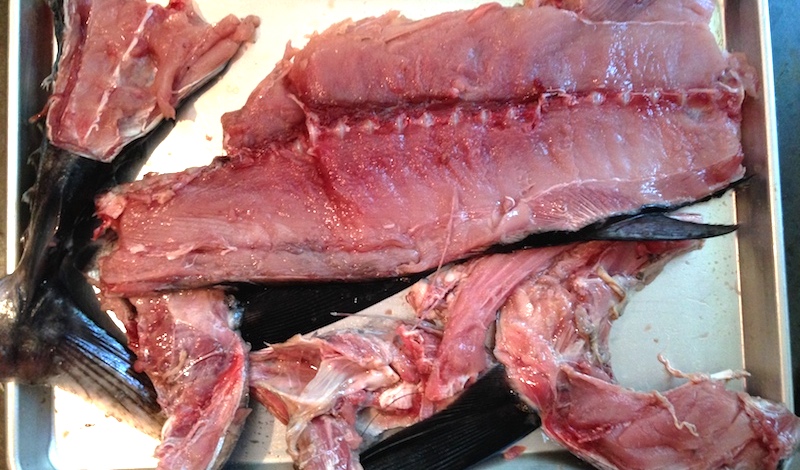
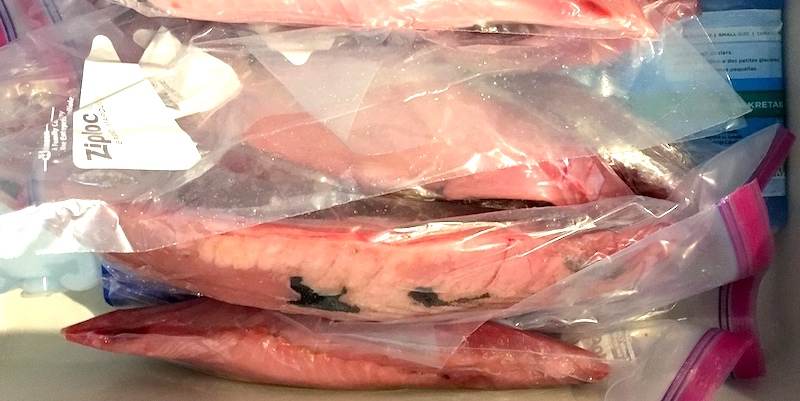
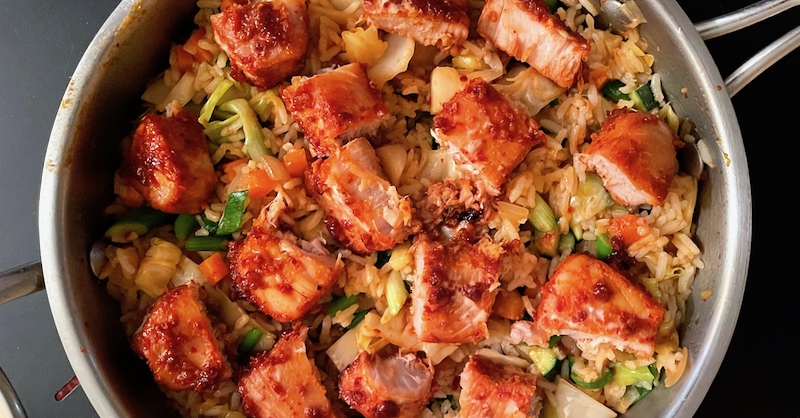
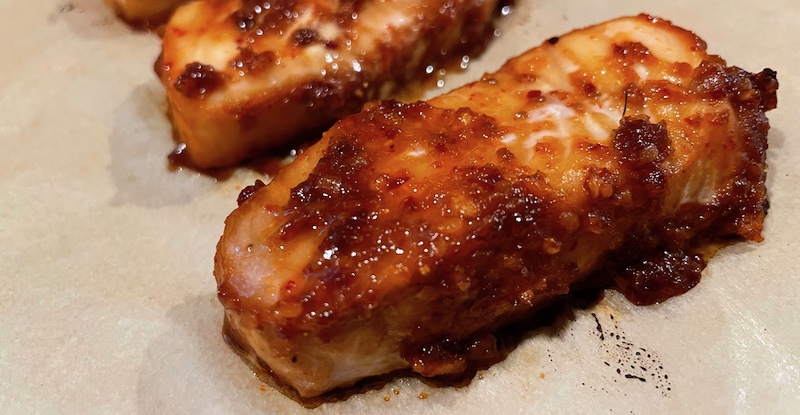





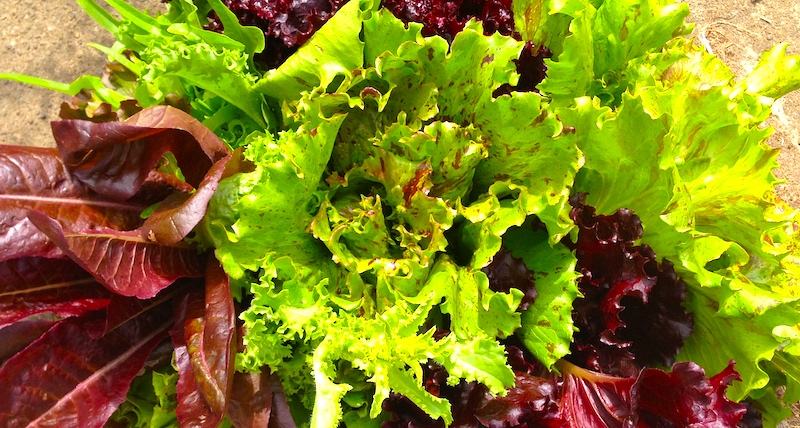


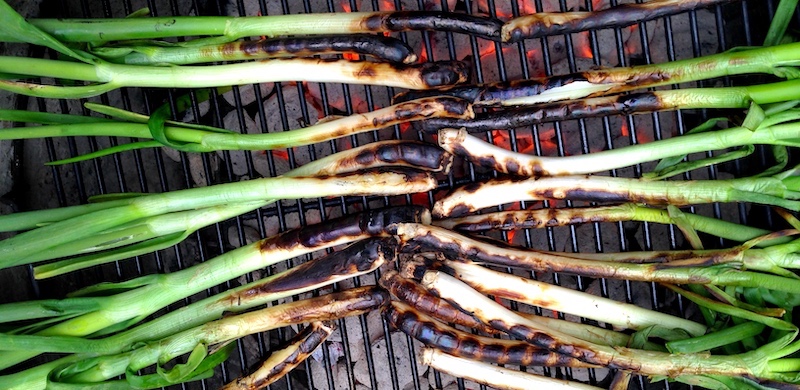
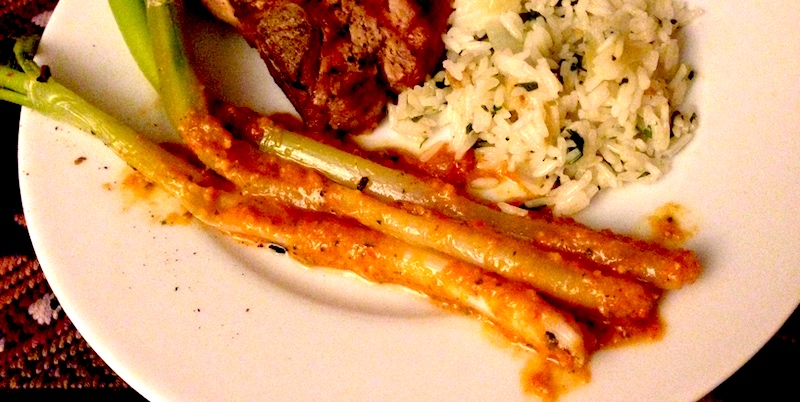 Cooked on a hot grill until the outside layer is blackened but not charred and the inside is soft and creamy, the blackened outside layer is peeled off and the remaining onion is dunked in a tangy romesco-like sauce called salbitxada (sahl-beet-SHAH-dah). Then, holding the onion aloft by the greens, the trick is to lower the soft, saucy white part into your mouth and bite it off without having the sauce dribble all over your face. (
Cooked on a hot grill until the outside layer is blackened but not charred and the inside is soft and creamy, the blackened outside layer is peeled off and the remaining onion is dunked in a tangy romesco-like sauce called salbitxada (sahl-beet-SHAH-dah). Then, holding the onion aloft by the greens, the trick is to lower the soft, saucy white part into your mouth and bite it off without having the sauce dribble all over your face. (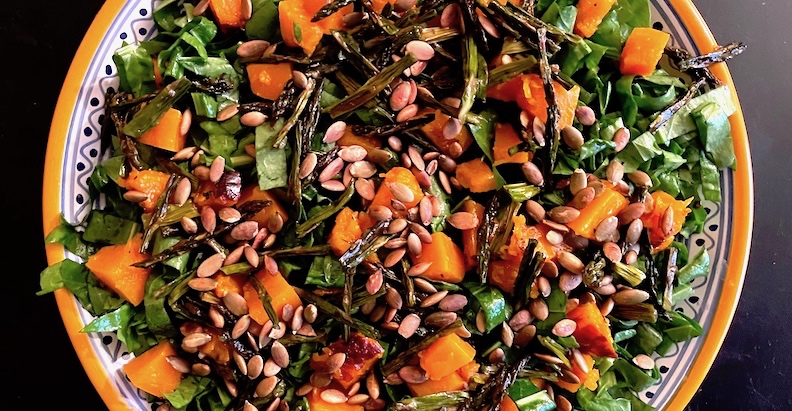
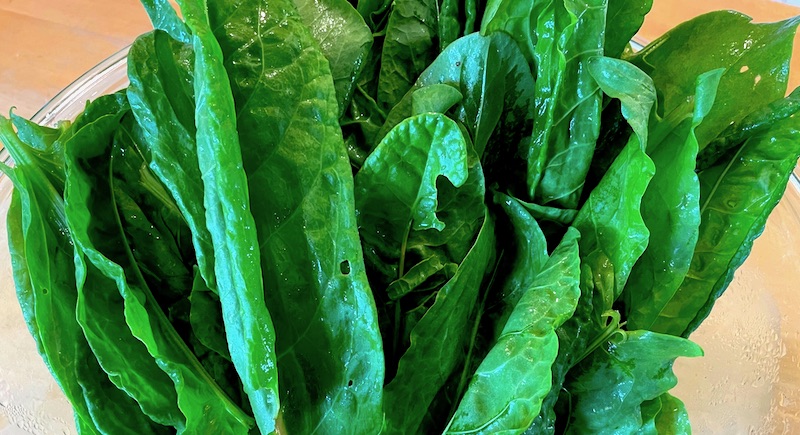 Chopping a few leaves into a salad was okay, but adding much more than four or five leaves, and their tangy, citrus-y bite overwhelmed the pleasant sweetness of the other greens. A pesto using half sorrel and half of another herb like spinach or parsley or basil worked, pepping up its flavor and giving it a lively greenness. But any of the above only used a smidgen of what the prolific plants were producing.
Chopping a few leaves into a salad was okay, but adding much more than four or five leaves, and their tangy, citrus-y bite overwhelmed the pleasant sweetness of the other greens. A pesto using half sorrel and half of another herb like spinach or parsley or basil worked, pepping up its flavor and giving it a lively greenness. But any of the above only used a smidgen of what the prolific plants were producing.